
USB stick not recognized – what can cause this and how you can resolve the problem
Contents
- Where is the USB stick displayed?
- Why isn’t the USB stick displayed?
- What can I do if the USB stick no longer works?
- Can a faulty USB stick be repaired?
- How can I restore a USB stick?
- Why do USB sticks fail?
- How long does data last on a USB stick?
- Can data be recovered from a faulty USB stick?
- What should I do if the USB stick has to be formatted?
- What happens when a USB stick is formatted?
- What format must a bootable USB stick have?
- Why won’t my Mac recognize the USB stick?
- Why won’t my TV recognize the USB stick?
- Conclusion
If the computer recognizes the USB stick in the normal way and can display it, it is normally visible in Windows Explorer. Things look different if Windows detects the USB stick but cannot display it, for example because another removable storage device or drive is already using the drive letters of the USB stick. This problem is simple to solve, however. Just press the key combination [Win]+R to display the Run dialogue. Enter ‘diskmgmt.msc’ and confirm with OK. This opens the PC administration system, where you can find the ‘Disk management’ menu item. If the USB stick can be seen in this list, Windows has been able to detect the stick but cannot display it normally.

There are a number of reasons why a USB stick is not displayed.
The USB stick is faulty
If a USB stick is not displayed, most people immediately assume that it is defective. Yet while this is understandably the first thought for many, in fact it is rarely the reason for the problem. It is naturally possible that the stick has a loose contact or for other reasons is not working, yet this fault is relatively uncommon.
The USB port is faulty
This is another common assumption, and it is often also correct. It is entirely possible that a USB port is defective. The USB port effectively forms a linkage between the stick and the computer. If it is not functioning, of course the USB stick cannot be recognized. If you suspect that the problem is with the port, you can try using a different port. If the stick now works, the fault was clearly with the port.
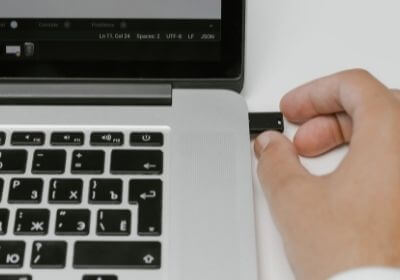
Drive letter is already assigned
This problem occurs frequently. If the connected USB stick is assigned a drive letter that has already been assigned elsewhere, the stick is not displayed. This problem can be solved simply by assigning a different letter to the USB stick.
USB controller does not have the latest driver
Connections via the USB port are managed on the computer by a USB controller. To ensure that the PC can recognize the different devices connected, it must have the most up-to-date driver available at all times. It is possible that the USB controller does not have the latest driver and the problem lies with this. By updating the driver, it may be possible to resolve the problem.
File system of USB stick is not supported
Every storage medium has its own file system; this is the same for USB sticks. In order for the PC to access the USB stick, the PC operating system must support the file system of the stick. Without this support, it is likely that the USB stick will not be recognized. In such cases the sole remaining solution is to connect the stick to a device that is both compatible with and supports the file system of the stick. This device can temporarily store the files while the USB stick is reformatted to ensure that it has the correct file system. Once reformatting is completed, the files are simply reloaded onto the USB stick and you can then try again to connect the stick to the required device.
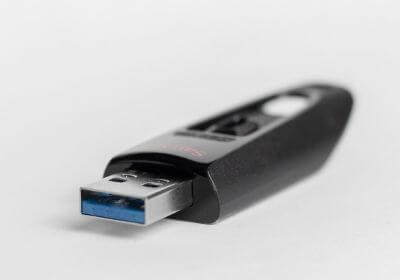
If the USB stick no longer works, the causes of the error should nevertheless be investigated. It is recommended that you first check whether the port on the USB device is in order and functioning. This can be easily checked by connecting the device to other USB ports. If the fault is not in the USB port, it is advisable first to check whether Windows recognizes the stick at all. If it does not, you can assume that the stick itself is defective. If Windows does detect the stick, but does not display it, the problem is probably a conflict of drive letters. The problem can be resolved by assigning a new drive letter. If none of these suggestions works, the only recourse is usually to try to rescue the data on the stick and then to format the stick. This can remove serious errors that can be caused during save or read operations. Finally, you should also check whether the USB ports of the PC or laptop are contaminated with dirt; this can also be a source of errors.
Windows offers a number of onboard resources that allow a USB stick to be repaired. Integrated into the operating system is an error checking tool that can be helpful here. Use it as follows:
- Insert the USB stick into a USB port.
- Now open Windows Explorer. The USB stick should be visible there.
- Right-click on the stick, and in the menu that opens, select ‘Properties’.
- This opens a window in which the Tools tab can be seen. Select this tab. Then, under ‘Error checking’, click Check.
- A number of different options are presented, such as ‘Scan and repair drive’.
- By clicking on the desired action, this is now performed on the USB stick.
- Once the procedure is completed, file and sector errors that could be responsible for the defect, should be remedied again.
If data is deleted from a USB stick, it is not irrevocably lost but in fact still present. All that has happened is that the storage space occupied by the data has been marked as available again for use. The data can meanwhile be recovered. Various free recovery tools are available to restore the data, such as Recuva. However, be sure not to store any new data on the stick before recovering the deleted data. It is otherwise possible that the data you wish to restore is overwritten first. To use the recovery tool, generally you insert the stick into the PC and start the tool. The USB stick is scanned and the files that can be restored are listed. Now all you have to do is select the files you want and restore them.

As with any technology, it can also happen that faults occur in USB sticks, for example in the electronics or the flash storage. These elements do not have an unlimited service life and can fail without any prior warning whatsoever. A contact may also come loose and become unreliable. It is therefore always important to create a backup for the data stored on the USB stick. While USB sticks generally have a very long service life, at some point they will all break down.
USB sticks are based on what is known as a NAND flash storage system. This means that individual memory cells are connected to create larger storage areas. Generally speaking, USB sticks should have a service life of between 10 and 30 years. How long they actually last also depends to an extent on how they are used. If a USB stick is used, say, only for archiving data such as images, it will be particularly long-lasting. The less often the data stored on a USB stick is overwritten, the longer the stick will last.
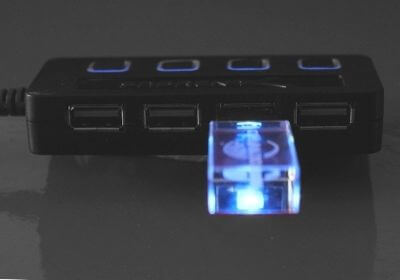
If error messages are issued while you are using a USB stick and you are unable to access the data stored on it, the stick needs to be repaired. Windows offers a number of solutions to this, or alternatively you can use appropriate software tools. To recover data from a faulty USB stick, proceed as follows:
- Plug the USB stick into the computer and check whether the stick is recognized.
- Open Windows Explorer, then right-click on ‘Removable storage devices’, ‘Properties’, ‘Extras and tools’ and ‘Test now’.
- Select ‘Automatically repair system errors’ and also ‘Look for/restore bad sectors’.
In the best case, the damaged data is recovered at the end of the test. If this does not happen, however, we recommend the use of free software tools for recovering the data.
It may happen that the message ‘You must format the data carrier’ appears when the USB stick is inserted. This message normally appears if the stick cannot be read. Since all data is deleted during a formatting operation, however, you should back up the data before formatting. In any case it is advisable before reformatting to try reinstalling the driver for the USB stick.
- Open the Control Panel.
- Go to ‘Hardware and Sound’, select ‘Devices and Printers’ and click ‘Device Manager’. Normally this action must be confirmed with administrator rights.
- Now open the USB controller and search for the USB stick.
- Right-click this and select ‘Update Driver’.
In many cases this solves the problem. If it does not, you will have to format the USB stick.
To do so, first remove the USB stick from the PC and reinsert it, then perform the format as instructed by Windows.
Most importantly, all data stored on the USB stick will be deleted. You should therefore always attempt to recover the data from the stick before formatting it. At the same time, the FAT file system is installed on the stick. This makes it compatible with current operating systems. Once the USB stick has been formatted, all data on it is deleted and new data can be stored on it.
USB sticks are most frequently used as portable storage media. The manufacturers are aware of this. And for this reason, USB sticks only carry a file system that allows file storage to be performed. They are not formatted off-the-shelf to operate as bootable media. If you need a bootable USB stick, you must look around for a model with FAT32 format. Alternatively, the Windows Diskpart partitioning utility can be used to make an ordinary USB stick bootable.
There are various reasons why a Mac doesn’t recognize the USB stick. It is only rarely that the fault lies with one of the components. In many cases it is simply an incorrect setting that is the problem. You should therefore check first how the Finder responds to removable storage media.
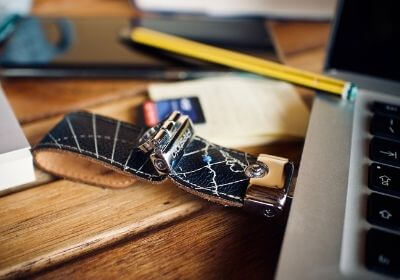
- In Finder, go to Storage and open the settings. Under ‘General’ you can select which specific objects are displayed. Ensure that the ‘External hard drives’ box is ticked.
- Under the Sidebar tab you can specify which objects are displayed in the left-hand part of the window. Here again the ‘External hard drives’ box must be ticked. Normally the USB stick should appear here, unless there is a serious problem.
If however the USB stick is still not displayed, try proceeding as follows:
- First, start the Disk Utility application.
- An overview then opens on the left showing all connected drives and all the partitions present on them.
If the USB stick is not visible here, you can assume that it is has an incompatible format. Alternatively, it is possible that either the stick itself or the USB port is faulty.
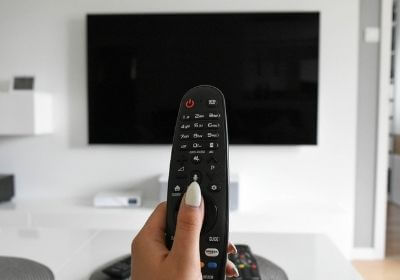
There are many different manufacturers of USB sticks and even more of televisions. As a consequence, there are numerous different problems for which the cause is that the TV does not recognize the USB stick.
It is worthwhile to try inserting a different USB stick into the TV. If the new stick is recognized, then it is clear that the problem is not the USB port of the TV. Similarly, you can try inserting the original USB stick into a different TV set and checking whether the data on it are accessible. If this is the case, you know that the USB stick is not faulty.
Older TVs can often be problematic. They frequently require a special format. In such cases it is helpful to format the USB stick with the FAT32 file system. Remember, of course, to back up the data on the stick before reformatting it. Another problem with older TV equipment is a restriction on the size of the data carrier. It is possible that with older equipment, only USB sticks up to a particular capacity can be used. In many cases the maximum size of the USB stick is 16 or 32 GB.
Frequently the problem may also lie with the TV itself. Many of them use outdated firmware. Updating the firmware often enables the stick to be recognized.
You now know that there can be various reasons why a USB stick is not recognized. A number of problems may be responsible, but fortunately, most of these problems are very easy to fix so that the USB stick can be used again. So if you discover one day that your computer doesn’t recognize a USB stick any more, don’t panic – there is usually a solution for rescuing the data stored on it.
